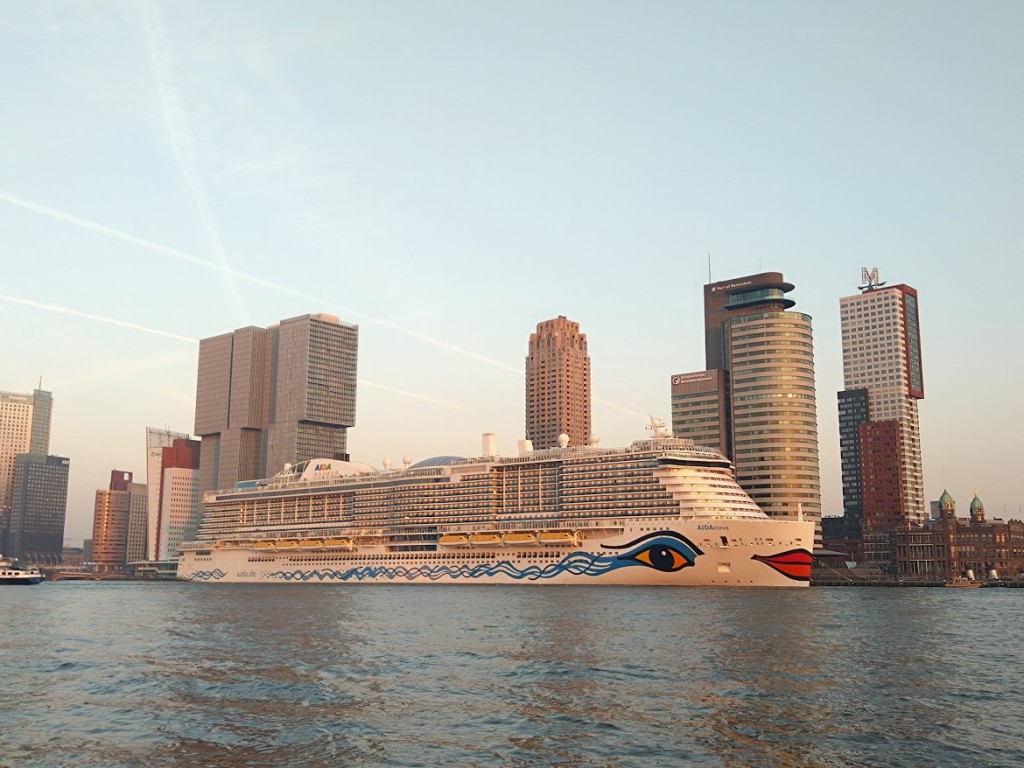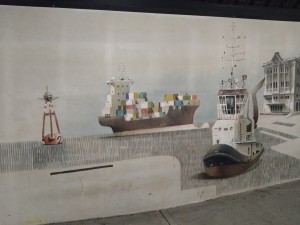Where the River Meets the Sea, a Port Is Born

Exploratory Visit to Rotterdam and Trieste 2025
Ports are key nodes in global trade, facilitating the movement of millions of tons of good and from which passenger, cargo, and military ships operate. They are remarkable employers and have served as trading posts for centuries. Logistics and industrial centers have developed around ports. Many ports host shipbuilding and repair activities and are home to massive storage facilities. Rotterdam is a major hub for the chemical and energy industries, including several oil refineries and biofuel production plants.
During my visits to Rotterdam and Trieste, I explored the operations of their ports and shipyards. The Port of Rotterdam is the largest in Europe and one of the busiest in the world. It acts as a major feeder port and transshipment hub where cargo is transferred from seagoing vessels to other modes of transport such as inland barges, trains, and trucks for distribution across Europe.
Its location in the Rhine-Meuse-Scheldt delta provides fast connections to over 1,000 international ports and serves as both the first and last port of call in Europe for many container ships. (1 & 2) Tr
ieste, in northern Italy, is well connected to Central and Eastern Europe by robust transport links. (3) Both cities operate one or mor
e active shipyards—Rotterdam’s largest is run by Royal IHC, while Trieste’s is managed by Fincantieri. In addition to Royal IHC, Rotterdam hosts several smaller shipyards, some of which specialize in ship repair.
By the late 1960s, Europe held 80% of the global shipbuilding market and led the world in shipbuilding technology and merchant vessel production. Over the past 50 years, the industry has steadily declined, although European companies have retained a strong position as key suppliers in marine technologies. (4)
City and Port
Ports have historically been central to urbanization and economic development. Trieste and Rotterdam are good examples—both grew around their ports, though their paths have diverged over time.
Trieste has been an
important port already during the Roman Empire. Rotterdam, on the other hand, began in the 13th century when the Rotte River was dammed, and the village of Rotta grew into what is now Rotterdam. Initially a modest fishing port, Rotterdam’s trade grew due to salted herring, which preserved well and could be transported long distances.
In the 1600s, both ports expanded thanks to international trade. Rotterdam became a gateway to America and Africa and developed as a center for sugar refining and the slave trade. Meanwhile, Trieste gained momentum when Austria declared it a free port. The city flourished under Austro-Hungarian rule until World War I.
In the late 1700s, Rotterdam suffered severe losses due to fire and war, but Flemish immigrants brought new expertise and capital to the region. Trieste remained relatively stable, though 19th-century geopolitical tensions and its multicultural population began to cause friction.
By the late 19th century, shipbuilding had begun to take root in Rotterdam, also its identity sifted from a simple trading outpost to a global logistics center — a pattern many ports would later follow. Trieste remained a key port of the Austro-Hungarian Empire and a busy gateway to the Mediterranean.
Both cities were heavily impacted by the 20th-century world wars. Rotterdam was almost entirely bombed in 1943, and its port was destroyed the following year by Nazi Germany to prevent it from falling into enemy hands. Trieste, though occupied by Germany, retained much of its port infrastructure. After the war, Yugoslav partisans seized the city, and it came under Allied administration before being returned to Italy in 1954.
After World War II, both cities experienced rapid recovery. Rebuilding Rotterdam’s port became a top priority, and by the 1960s, it was the largest in the world. A petrochemical hub also emerged. The rise of container transport transformed logistics for good, firmly establishing Rotterdam’s place in global trade. Trieste, too, continued to develop as part of Italy and has maintained its position as a key Mediterranean port, now home to Europe’s largest shipbuilder, Fincantieri.

Toward a Sustainable Maritime Industry
As I explored port operations and shipbuilding, it became evident that sustainability and responsibility are playing an increasingly important role in the maritime sector. Many shipyards and ports approach the issue through the lenses of efficiency, cost savings, and risk management—rather than redefining sustainability from environmental and social responsibility standpoints.
The term “green port” appears frequently, especially on the websites of Europe’s largest ports. (5) It refers to ports that aim to reduce their environmental impact and promote sustainable development, for example by using renewable energy, improving energy efficiency, or developing environmentally friendly logistics solutions.
But shouldn’t this already be standard practice and simply considered good business—rather than a special “green” initiative? Of course, the diverse conditions across ports make the theme challenging: Europe has over 300 ports, each with vastly different circumstances depending on local legislation, ownership structures, and stakeholders. (6) Discussing sustainability varies greatly depending on whether we’re looking at an oil refinery, a container ship’s loading and unloading operations, or a shipyard—each has very different impacts and opportunities for transformation. Given the diversity and complexity of this global network of thousands of actors, strong legislation and a true willingness to change are crucial.
In Rotterdam, I learned that waste heat generated by port operations is used to heat local homes. The port also features vast cold storage facilities, where solar panels help keep tropical fruits at the right temperature before they are shipped across Europe. One of Rotterdam’s smaller shipyards, specializing in ship repairs, has set a goal of becoming the world’s most sustainable provider of maritime solutions—an inspiring example of the industry’s potential direction. (7)
Still, questions remain: What is the actual overall impact of a few solar-powered warehouses if the rest of port operations remain unchanged? Does the “green port” label genuinely reflect sustainable practices, or is it just surface-level marketing? And what about shipyards—that complex puzzle of hundreds of suppliers, massive material flows, and immense amounts of data—where are the real leverage points for systemic change?
The S4M project is taking a look to those topics, within the shipbuilding network. The goal is to support the network by developing a maturity model to assess its current level of sustainability. Together with stakeholders, we aim to set concrete goals that guide the development of responsibility and sustainability—and help actors advance toward higher levels of the model. I hope to see these pioneering companies, committed to voluntary responsibility, build real competitive advantage—and serve as role models for the entire industry.
The sustainability transition of ports and shipyards is no small matter; it’s a key part of the transformation of global trade. Historically, ports have always been nodes of change where business and society intersect. Now they have the opportunity to become engines of a green and just transition. By shifting the focus from mere efficiency and cost savings to genuine responsibility, we can develop solutions that not only reduce climate impacts but also improve social justice across wide networks. Change won’t happen on its own—but with the right actions and real intent, ports can once again show us what they’re truly capable of.
Author: Sini Ilmonen
Circular Business Models Research Group
Sources:
1: https://fi.gov-civ-guarda.pt/rotterdam
2: https://www.portofrotterdam.com/en/logistics/connections/deep-sea-and-feeder?utm_source=chatgpt.com
3: https://www.trieste-marine-terminal.com/en/our-company
4: https://navigatormagazine.fi/uutiset/itaisen-saksan-telakoiden-nousu-ja-tuho/
5: https://www.portofrotterdam.com/en , https://gp-hamburg.de/en/service/ports/?utm_source=chatgpt.com, https://www.portofantwerpbruges.com/en/our-port/climate-and-energy-transition?utm_source=chatgpt.com,
6: https://transport.ec.europa.eu/system/files/2016-09/2014_list_of_329_ports_june.pdf

